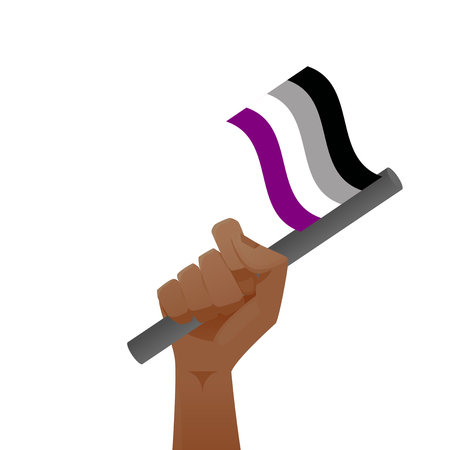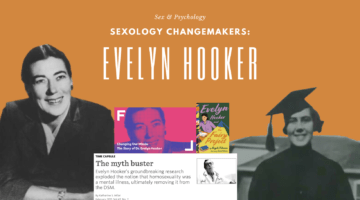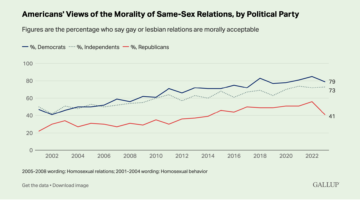Are You Asexual? Here’s How Scientists Measure Asexuality
June 26, 2017 by Justin Lehmiller
Sex scientists have become increasingly interested in the topic of asexuality in the last few years. For example, they’ve published studies on everything from the genital arousal patterns of asexual individuals, to the biological correlates of asexuality, to the masturbation practices of asexuals. However, all of this research has generated some controversy over how best to measure asexuality because different researchers have used different definitions and measurement techniques. For example, some have focused on self-identification as asexual, while others have focused on a self-reported lack of attraction and/or behavior. If the broader literature on sexual orientation has taught us anything, it’s that identity, attraction, and behavior don’t always line up in the way that you might expect and shouldn’t be used interchangeably.
In an attempt to provide a more standardized way of measuring asexuality, the Asexuality Identification Scale was created. According to the creators of it, this scale is designed to be “used as a valid and reliable tool to distinguish asexual individuals from sexual individuals for research purposes.”
This scale consists of the following 12 items, each of which is rated on a 5-point scale, ranging from completely false/never (1) to completely true/always (5).
1. I experience sexual attraction toward other people. (reverse scored)
2. I lack interest in sexual activity.
3. I don’t feel that that I fit the conventional categories of sexual orientation such as heterosexual, homosexual (gay or lesbian), or bisexual.
4. The thought of sexual activity repulses me.
5. I find myself experiencing sexual attraction toward another person. (reverse scored)
6. I am confused by how much interest and time other people put into sexual relationships.
7. The term “nonsexual” would be an accurate description of my sexuality.
8. I would be content if I never had sex again.
9. I would be relieved if I was told that I never had to engage in any sort of sexual activity again.
10. I go to great lengths to avoid situations where sex might be expected of me.
11. My ideal relationship would not involve sexual activity.
12. Sex has no place in my life.
Before calculating the total score, you would need to reverse-key items 1 and 5, as indicated above (the easiest way to do this is to just subtract each of those scores from 6—so if you gave one of those items a 2, your reverse-scored number would be 4. And if you gave one of the items a 5, your reverse-scored number would be 1). Then, you simply add up all of the numbers.
The total possible score is 60, but researchers have established that 40 is the cut-off point for asexuality. In the original scale validation paper, they found that this cut-off captured 93% of self-identified asexuals (i.e., 93% of them scored 40 or above); it also captured 95% of sexual persons (i.e., 95% of them scored below 40).
This measure is useful for researchers who are looking to classify participants into well-defined groups—a very important scientific goal. When researchers use different measurement tools (especially tools that haven’t previously been validated), it makes it very difficult to make sense of studies that have conflicting results because you don’t know whether the difference is due entirely to measurement or to something else.
While I’ve read some criticisms of this scale suggesting, for example, that it necessarily implies that asexuality means experiencing sexual repulsion, that’s not the case at all. In fact, it’s possible to answer “completely false” for that item and still be categorized as asexual, which means that repulsion isn’t a defining feature. Asexuality is something that can be a bit different from one person to the next and this measure allows researchers to capture some of that diversity and variability. It also offers researchers the option of sorting asexuals into subgroups based on whether they experience things like sexual repulsion or not.
To learn more about this scale and how it was developed and created (including how the specific items were chosen), check out the video below in which one of the study’s authors, Dr. Lori Brotto, breaks it down for us.
Want to learn more about Sex and Psychology ? Click here for previous articles or follow the blog on Facebook (facebook.com/psychologyofsex), Twitter (@JustinLehmiller), or Reddit (reddit.com/r/psychologyofsex) to receive updates.
To learn more about this research, see: Yule, M. A., Brotto, L. A., & Gorzalka, B. B. (2015). A validated measure of no sexual attraction: The Asexuality Identification Scale. Psychological Assessment, 27, 148-160.
Image Source: 123RF/Beatriz Gascn
You Might Also Like:

Dr. Justin Lehmiller
Founder & Owner of Sex and PsychologyDr. Justin Lehmiller is a social psychologist and Research Fellow at The Kinsey Institute. He runs the Sex and Psychology blog and podcast and is author of the popular book Tell Me What You Want. Dr. Lehmiller is an award-winning educator, and a prolific researcher who has published more than 50 academic works.
Read full bio >


